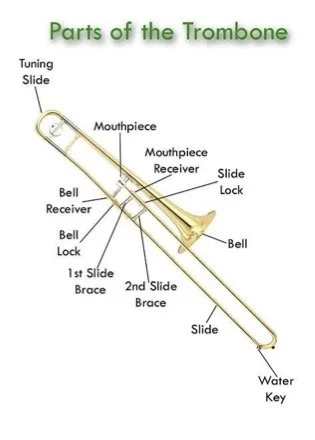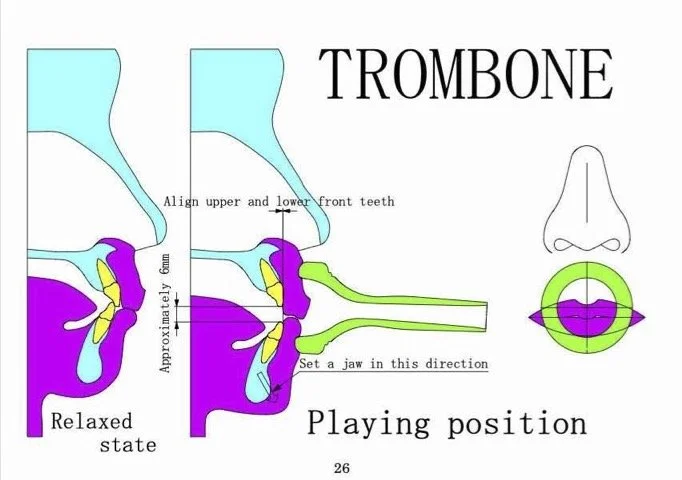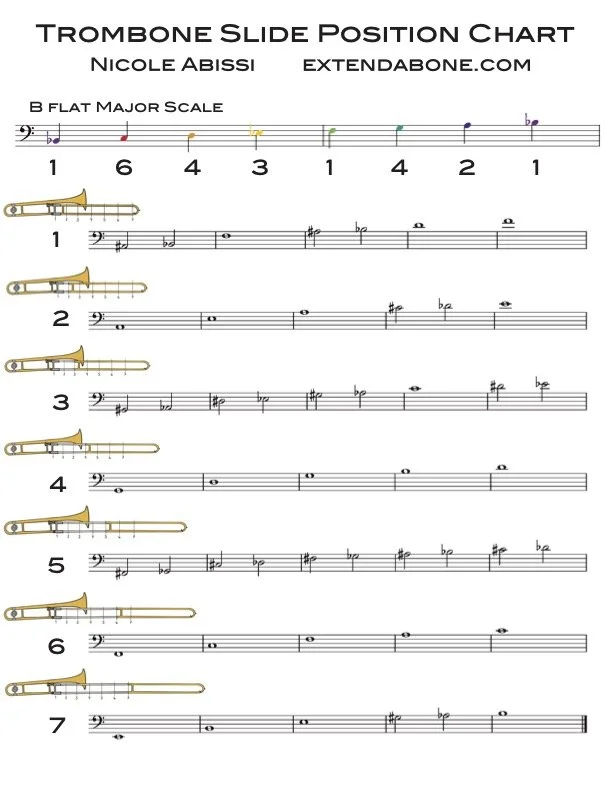Essential Question: What is a trombone?
The trombone is a brass instrument known for its unique sliding mechanism and powerful, versatile sound. It is an integral part of orchestras, brass bands, jazz ensembles, and many other musical settings. Its ability to produce smooth glissandos, wide dynamic range, and a broad tonal palette makes it a favorite in both classical and jazz music.
Physical Features:
Mouthpiece:
A detachable, cup-shaped mouthpiece where the player buzzes their lips to produce sound.
Available in various sizes to suit different playing styles and preferences.
Slide:
The most distinguishing feature of the trombone, consisting of two parallel tubes that the player moves to change the length of the tubing and alter the pitch.
The slide has seven positions, each corresponding to specific pitches.
Bell:
The flared end of the instrument where sound is projected.
Produces a warm and resonant tone, with varying sizes and materials affecting sound quality.
Tuning Slide:
Located on the back of the trombone, it allows for fine-tuning the instrument's overall pitch.
Valve (on specific models):
Some trombones, like the tenor-bass or bass trombone, include an F-attachment or additional valves to extend the instrument’s range and facilitate playing lower notes.
Range:
The trombone typically has a range from E2 (just below the bass clef staff) to Bb4 (above the staff), though skilled players can extend higher.
The range varies slightly depending on the type of trombone.
Sound Production:
Sound is created by buzzing the lips into the mouthpiece, producing vibrations that travel through the tubing.
The player manipulates the slide to change pitch and uses embouchure and air control to refine tone and dynamics.
Types of Trombones:
Tenor Trombone:
The standard trombone used in most ensembles, versatile and widely played.
May include an F valve (F-attachment) for additional lower notes.
Bass Trombone:
Larger than the tenor, with a deeper, richer tone and has one (or two) valves for extended low range.
Commonly used in orchestras and large ensembles.
Alto Trombone:
Smaller than the tenor, pitched higher, and used primarily in classical and solo repertoire.
Valve Trombone:
Features valves instead of a slide, making it more similar to other brass instruments like the trumpet.
Often used in specific jazz and traditional band settings.
Soprano Trombone:
Pitched higher than the alto and similar in range to the trumpet.
Rarely used outside of specialized settings.
Historical Context:
The trombone's origins date back to the Renaissance, where it was known as the "sackbut."
Initially used in sacred and ceremonial music, it evolved into a more versatile instrument by the Baroque and Classical periods.
Modern trombones with standardized slides and tuning mechanisms emerged in the 19th century.
Trombone Mouthpiece Position
Typical tombone mouthpiece placement is 1/2 on the top lip and 1/2 on the bottom lip, but the larger mouthpiece allows more flexibility in this ratio.
Push the jaw slightly forward so the teeth are lined up on top of each other
Open the teeth lightly
Form a “brass face” to set the jaw and create the embouchure with a small opening in the center of the lips (aperture)
Blow air through the aperture to start the buzz



